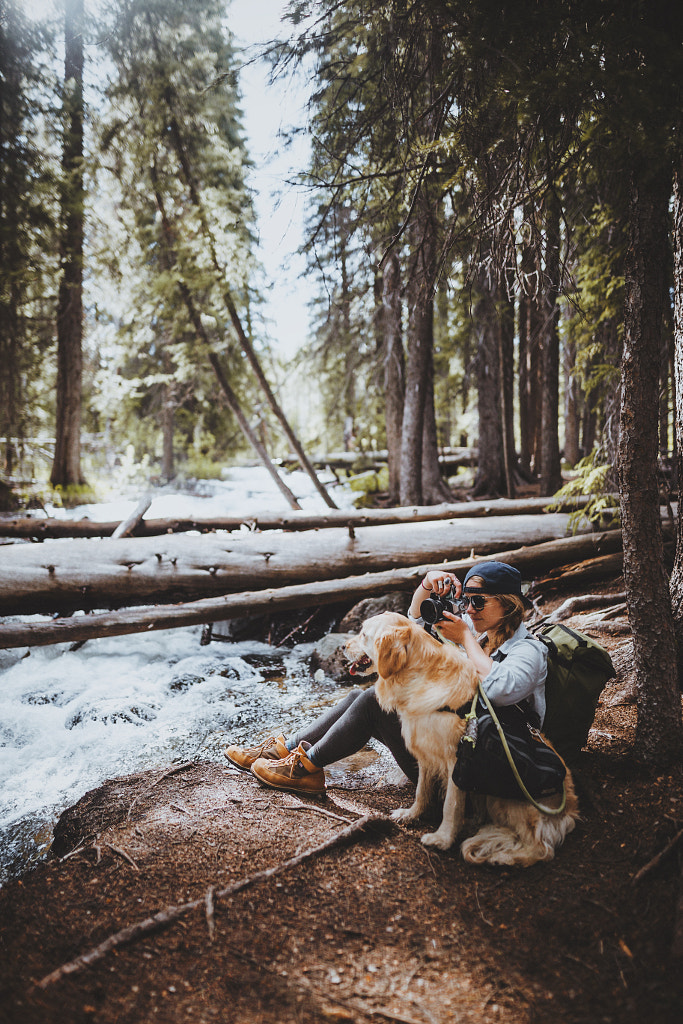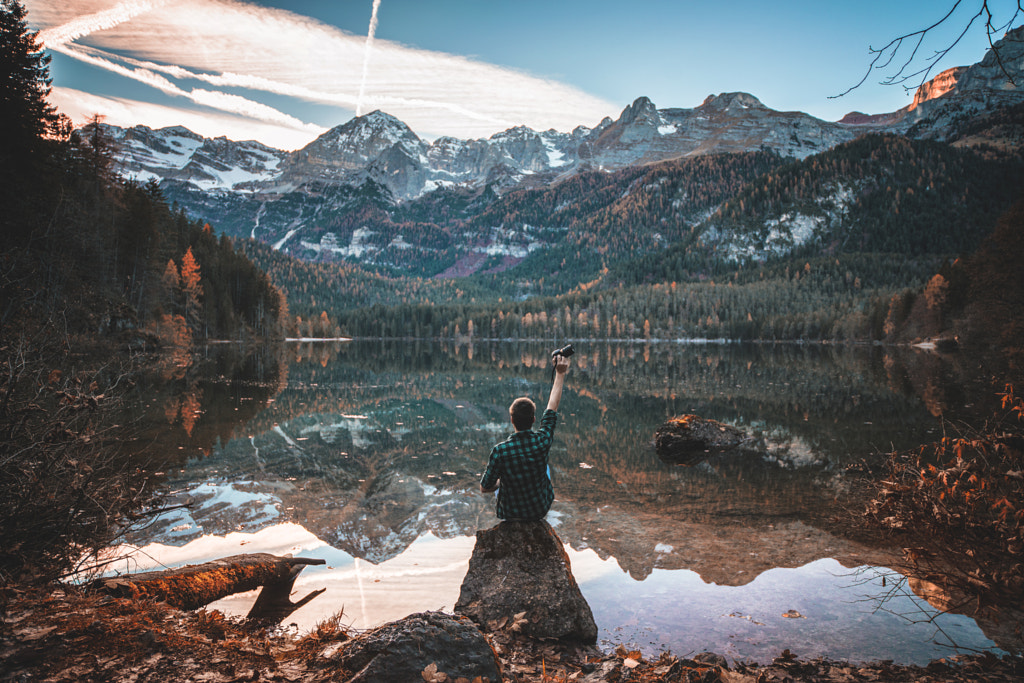Thinking about starting your photography business? This is what you need to know
byAccording to a recent survey by The Society for Photographic Education (SPE) and the American Society of Media Photographers (ASMP), 60% of educators said their students were not required to take any business or marketing classes as part of their curricula, while 23% said that their students only had to take one of these courses.

Being business savvy is essential for any photographer working today, but it’s something many of us overlook. Photography skills are only one part of the equation—the ability to communicate with clients, network with industry insiders, and stay within a budget are also important. These days, you don’t need a fancy studio set-up to make money from your photography, but you do need a keen business sense.
Here are thirteen things to keep in mind before you get started.

You can learn a lot by assisting another photographer
One of the best ways to learn the ins and outs of the photography business is to start as an assistant. Browse 500px, Instagram, Pinterest, and Facebook, and keep an eye out for photographers in your area who are doing the kind of work you want to do someday.Reach out and see if they need help on set, and offer them an extra pair of hands. Get creative and personalize your approach. Tell them what you like about their work, or send out a customized postcard or mailing with some of your recent work. Whether you’re helping them set up the studio or keyword their photos, apprenticing with a working photographer will give you invaluable insight into how the industry operates.

It’s important to find a community
Before starting a business, get specific about the field and genre you want to enter and start making connections within that industry. These days, there are all sorts of niche markets available to photographers, so the more specific you can get about the kind of work you want to shoot (and who your ideal clients are), the better.If you’re interested in event photography, for example, network with party planners in your area and see if you can trade referrals. If you love animals and want to work in pet photography, volunteer at your local shelter to help animals get adopted. Or, if you’re interested in portraiture, offer free prints to models in exchange for their time.
Don’t forget to explore Licensing as a potential avenue—and income stream. If you license your work through 500px, your photos could be promoted to clients around the world, who can purchase your images as royalty-free stock photography.

Trends change all the time
Speaking of stock photography, licensing your photos is a great way to explore what kinds of images are commercially viable. 500px Licensing Galleries provides an overview of trending topics, from vegan food to outdoor adventures, so check back often to see what’s selling. Once you get a feel for emerging trends, you can incorporate them into your own shoots for client and stock work alike.
It’s up to you to be different from everyone else
Spend some time thinking about what makes you memorable. Maybe you have access to a rare location or subject, or you have a “signature” lighting style—whatever it is, it’s important to have something that differentiates you from the crowd (and the competition).Pay attention to the comments and reactions you get from followers. Upload your photos to 500px, monitor your “likes,” and form connections with like-minded photographers online. They might be able to notice patterns in your work before you do—and pinpoint that special attribute that sets you apart. When testing out a new aesthetic or idea, pay attention to the critical response.

If you value your time, other people will too
When you’re first getting started, it’s tempting to accept unpaid jobs, and sometimes, it might be worth it if a brand or platform offers widespread exposure. But if you want to succeed in this business, you also have to know how to negotiate.Once you’ve set up a business plan, calculated your costs, and taken a look at prices in your area, it’s your job to ensure you get paid fairly for your work. As you progress, keep track of how much time you spend on each assignment to determine your hourly rate. If it isn’t enough, you’ll know to raise your prices.
Creating a business isn’t easy, but learning to stick up for yourself and knowing your worth is the first step.

A business plan can be a major asset—if you do it right
Writing a detailed business plan that outlines your goals and objectives—and concrete, realistic numbers—is essential, and, on average, entrepreneurs who plan are more likely to be successful than those who don’t. But you don’t have to write your business plan right off the bat for it to be effective.In fact, research from the Harvard Business Review reveals that, in general, the most successful entrepreneurs tend to write their plans within six months to a year of deciding to start a business. Additionally, the “optimal time” spent on drafting a plan proved to be about three months. It can take time to figure out what works and what doesn’t, so stay adaptable, and don’t get “locked” into doing one thing just because it’s in your business plan.
Budgets are essential—in the short and long term
Your initial business plan should outline all your goals for your first year, including how much you want to earn. Don’t forget to set up some spreadsheets or use a financial tracking app like Goodbudget or Toshl Finance to stay up-to-date with your expenses and profits. Staying organized is the first step toward avoiding overspending.It can be easy to fall into the trap of buying too much too early, especially when it comes to gear, so remember to rent or borrow before you buy. Investing in marketing and honing your skills is generally a better bet than spending all your money on expensive gear.
It helps to get a CPA (Certified Public Accountant)
Touching base with an accountant will ensure you stay on track with your finances throughout the year—and it’ll keep you from dreading tax season!
Networking is a must
“People skills” are almost as valuable as your skills behind the camera. As a photographer, you’ll encounter all kinds of people—clients, models, editors, collaborators, etc.—and they’ll often hold the key to your success. Forge genuine, lasting connections with the people you work with. Learn about their work and support them in their professional endeavors.Networking is about more than just cold-calling or meeting people at exhibitions, portfolio reviews, and events; it’s also about following up once you leave. Check-in with former clients, and submit your latest projects to editors and curators on a regular basis. Ask for feedback.
Also, don’t be afraid to ask clients for testimonials and referrals—this is how you get more work. You can even include a nice, subtle reminder at the end of a regular survey you send out following each job.
It pays to start local
In the beginning, some of your most valuable connections will be close to home. Attend local shows and reviews, and offer your services to businesses in your area. Starting locally is a good way to hone your networking skills, and with time, your circle will grow to include clients far and wide.Newsletters can help you grow
As a photographer, email marketing is one of your most valuable assets—according to one survey from 2014, it can be forty times more effective than social media when it comes to getting new customers. As you grow your business, your email list will grow with it, but it’s important to get started building it up as soon as possible.Start with models, clients, collaborators, editors, and anyone else who might be interested in your work. Under the General Data Protection Regulation (GDPR), you’ll need to have informed and unambiguous consent from your subscribers, so make sure to get their permission first.
Your newsletter can take any form you want, but think about incorporating visuals from your recent shoots and sharing some behind-the-scenes stories and tips. The more value and insight you can give your audience, the better. You can also add promotions for upcoming sessions or discount codes for prints to entice readers.

Patience is everything
Building a brand and a business is more of a marathon than a sprint. Take your time, and tackle every new assignment like it’s your dream job. Overnight success is a rarity in this business, but if you can slowly build a network and a client base, those small steps will add up over time.Try new techniques, and test out what resonates with followers and clients. If something doesn’t sell, switch it up and experiment with a different approach. Enroll in a workshop with a photographer you admire to hone your skills and refine your eye.
As a photographer, you don’t have to box yourself into doing just one thing; instead, remember to adapt and evolve over time. Finally, avoid comparing yourself to others; everyone works at a different pace.

You can’t forget to keep shooting
Running a business is a full-time job, but you also have to make time for personal projects. The 500px Content Team provides regular briefs in the form of Licensing Quests to help you tap into your creative potential—and exciting commercial markets.Don’t let the hustle and bustle of daily life, bills, client invoices, and financial tracking can get in the way of practicing your craft. First and foremost, you’re a photographer, so remember to get out there and do what you do best.
Share this article.
No comments:
Post a Comment
Note: Only a member of this blog may post a comment.